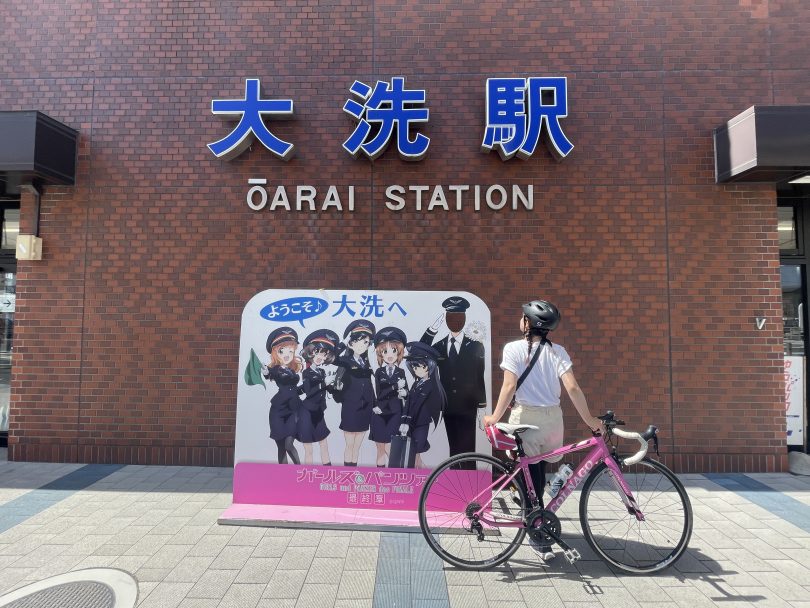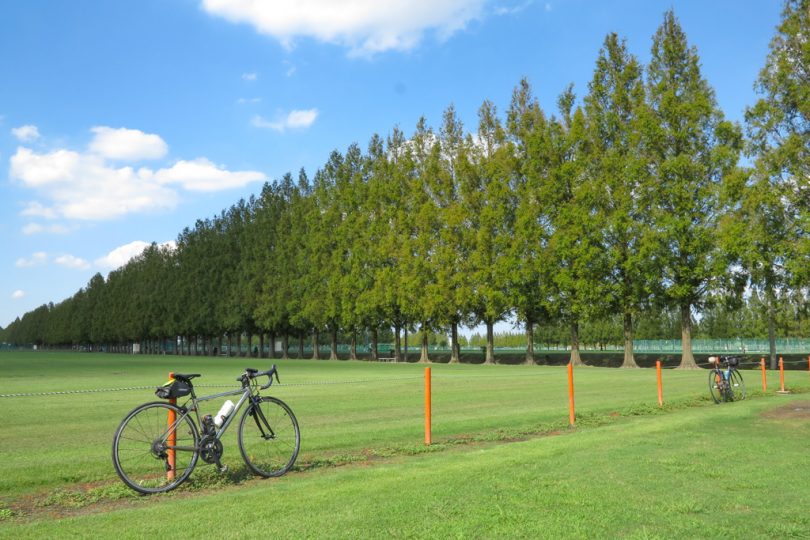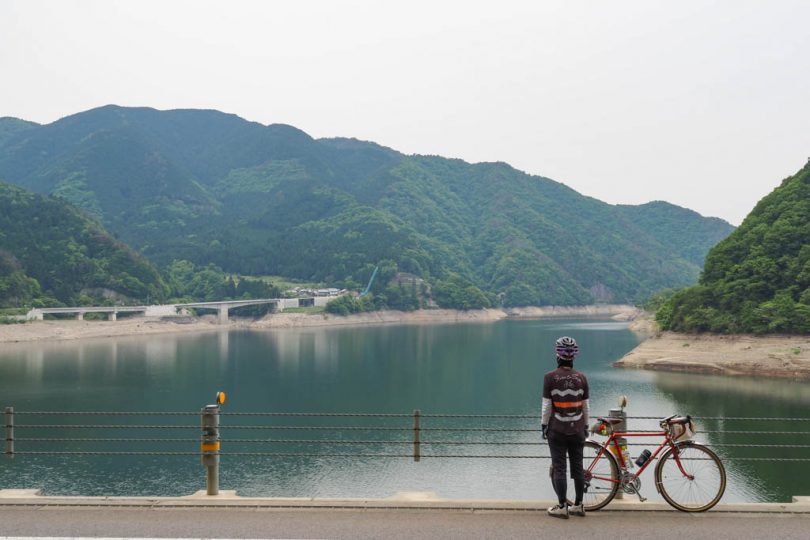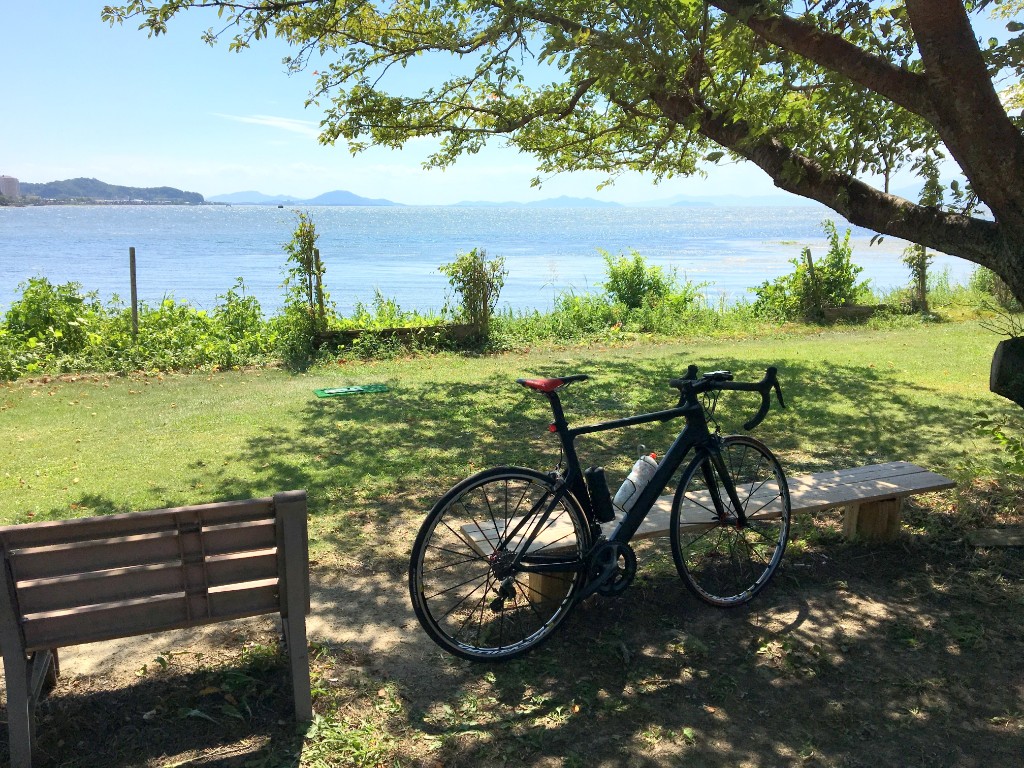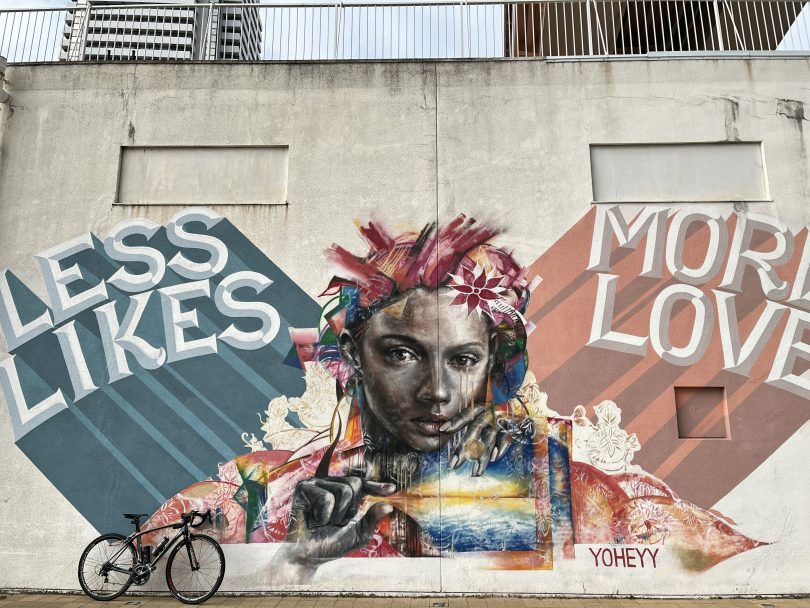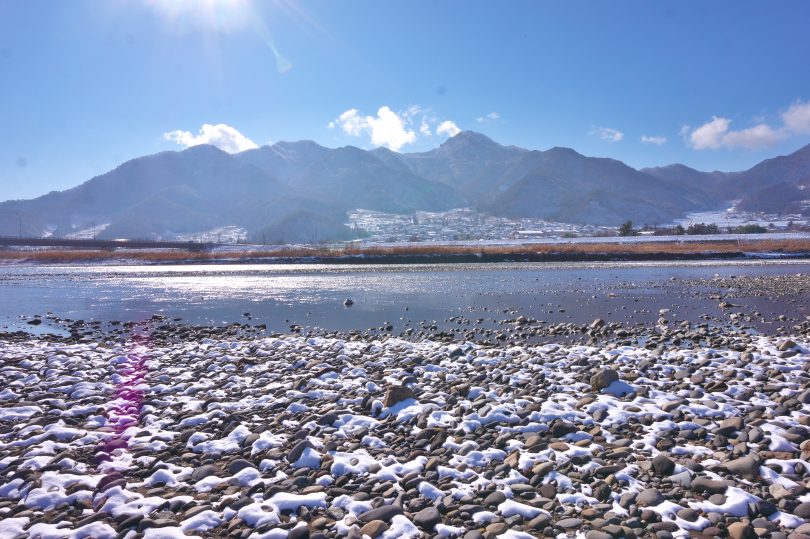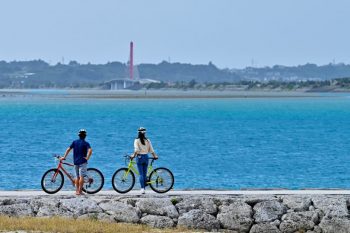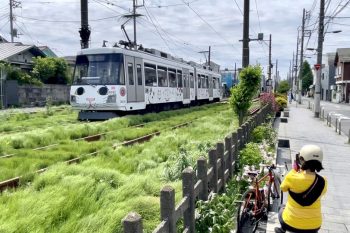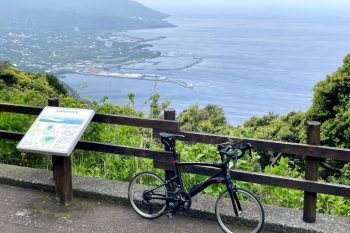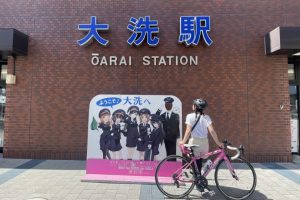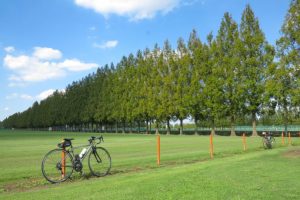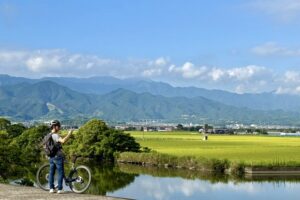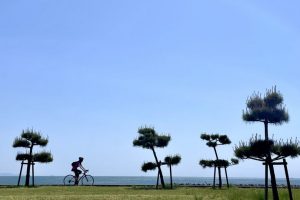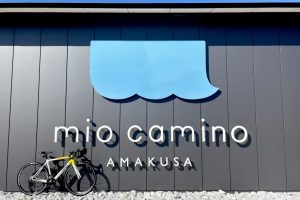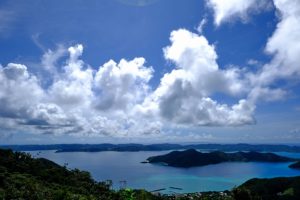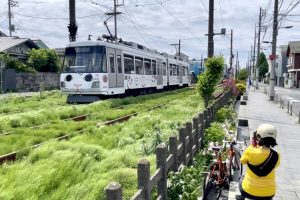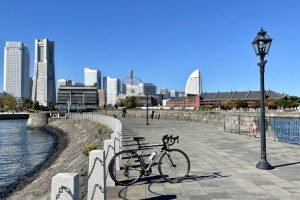Innai town, a town with many villages in the valley, has as many as 75 stone bridges of various sizes. We carefully selected arch bridges in good condition and decided to ride around them by bicycle.
Contents
Starting at Roadside Station Innai
We parked the car at Roadside Station Innai in Innai town, Usa City, Oita Prefecture, to get ready for the tour.
We told the staff at the roadside station that we wanted to visit the stone bridge tour, and they allowed us to stop the car.
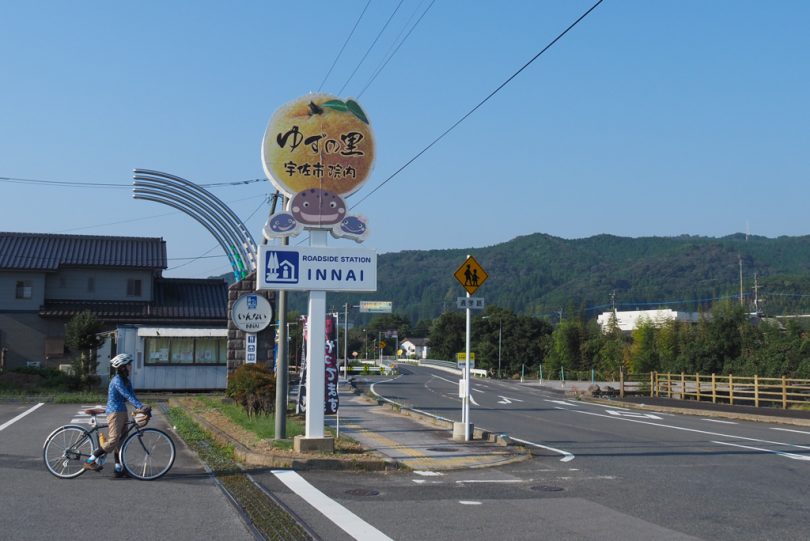
Arase Bridge near the roadside station
The first stone bridge is located near Roadside Station Innai.
It is a beautiful double-arched bridge with a park at the foot of the bridge, where you can look up.
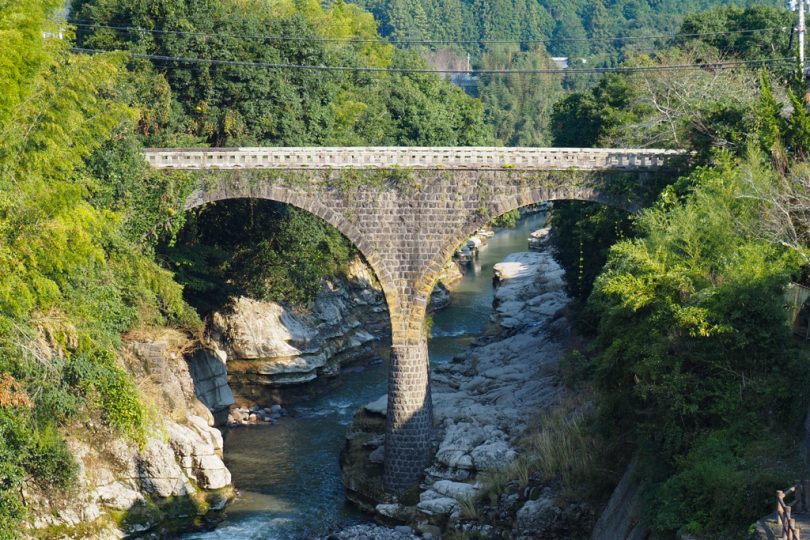
On the way north on Route387, we found a sign that said Former Toyosu Railway Station.
It appears to be a former Japanese National Railways line that once connected Nippou Main Line from the former Buzen Zenkoji Station to Buzen Futsukaichi Station.
The masonry next to the signboard is the remains of a steam locomotive water tank, which is a cultural heritage.
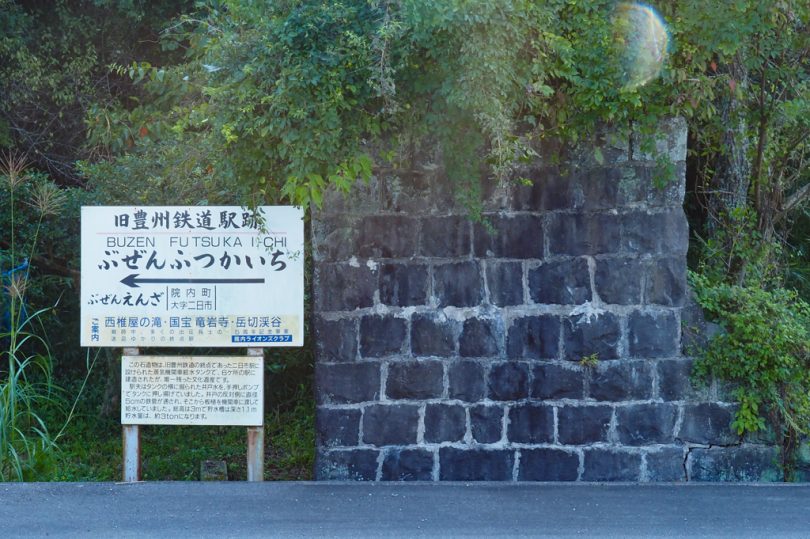
Mikutsu Bridge, built in 1925, is a triple-arch bridge. The bridge is 59m long, making it the longest bridge in the town.
There is a park nearby where visitors can get a close-up look at the bridge.
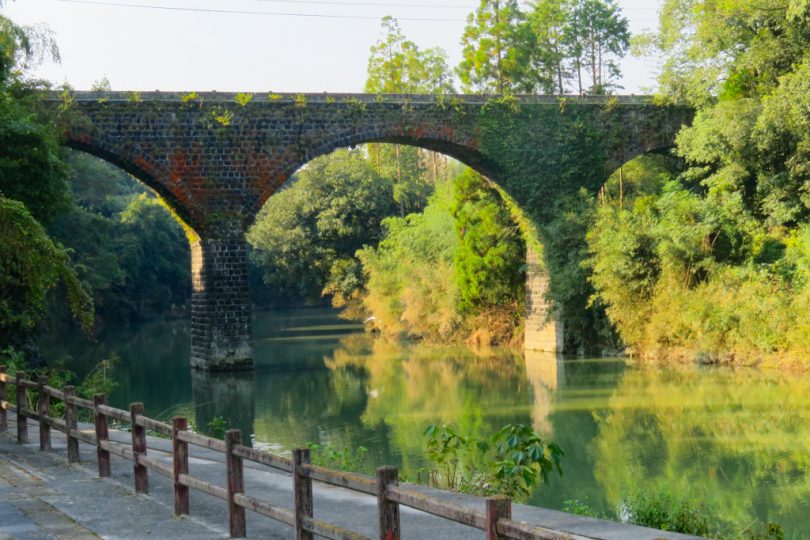
Turn right onto Prefectural Route42, go up the hill, and you will pass through a small tunnel.
Continue down the hill and do not cross Shingai River, but turn right before it and stop by Shimoichi Magaibutsu.
Passing through the torii gate at a slightly secluded place, you will see Magaibutsu carved all over the rock wall.
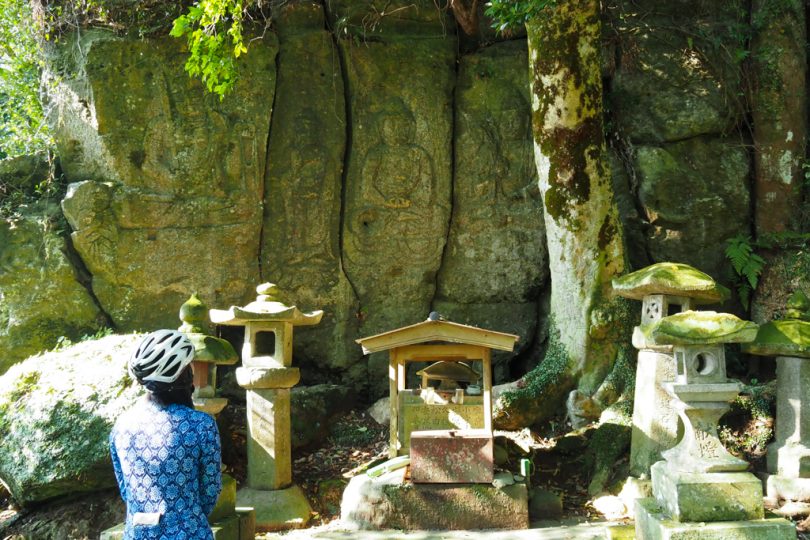
It can be seen from a fairly close distance. It seems that the Buddha was carved in the first half of the Muromachi period (1336-1568), but it is in good condition and does not look that old. It is quite worth seeing.
Sen-no-iwa, Rocks Rising High in the Sky
Cycling along Shingai River is Yakushi-buchi.
On a terrace on the opposite bank of the river, there is a hall enshrining a statue of Yakushi Nyorai and a flanking attendant. It seems that the area near the confluence of Shingai River and Fukami River is called Yakushi-buchi.
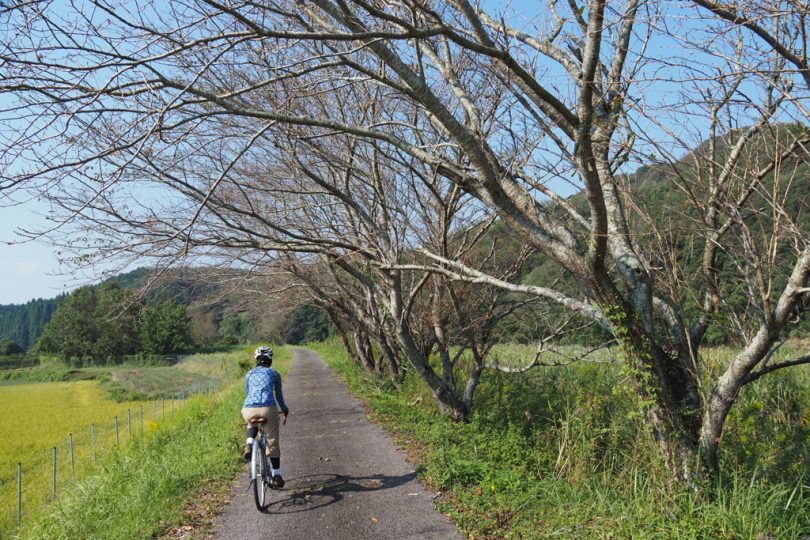
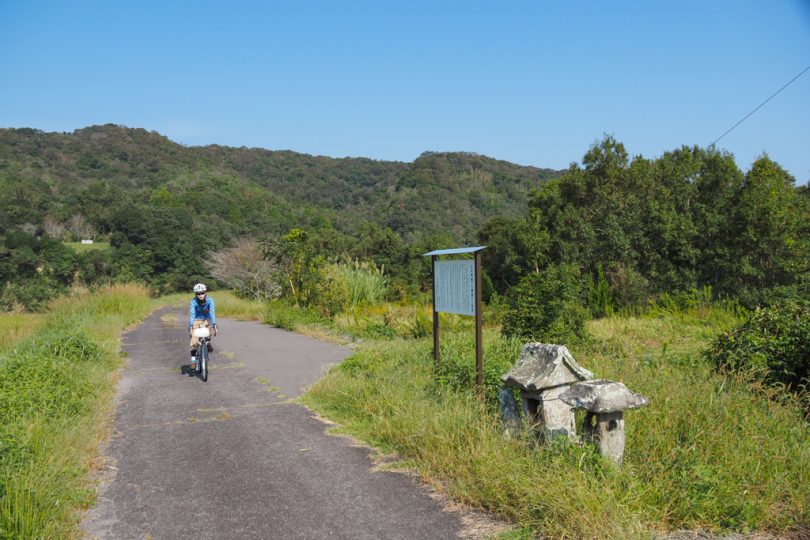
Cycling along Fukami River from Prefectural Route50, Sen-no-Iwa appears at the end of a large curve.
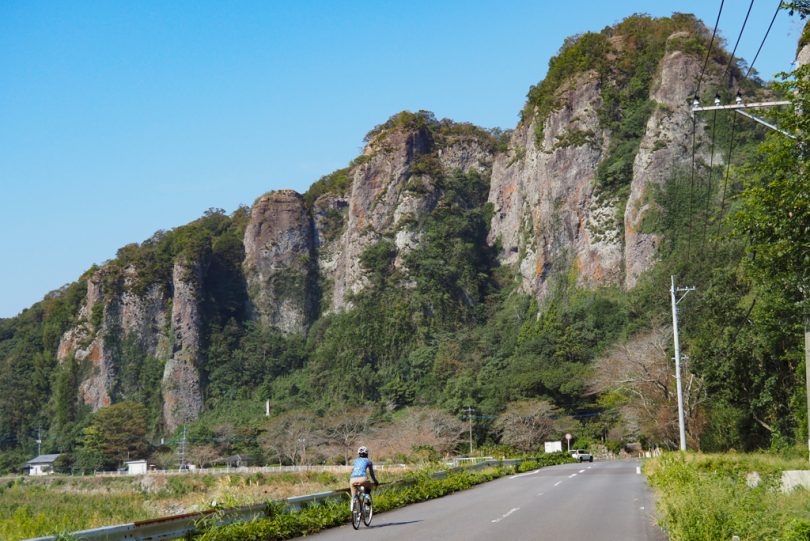
First of all, you will be surprised by its size. The large rock pillars, reminiscent of Chinese ink paintings, are a sight to behold.
The large rock pillar, about 100m high and made of massive rock, is said to have served as a training site for mountain Buddhists.
It is said to have been called “”Sen-no-Iwa” (the rock of a hermit) because an Indian monk, Hodo Hermit, lived here long ago.


Further along Prefectural Route50, you will see a blue sign that reads “Go straight to Yufuin, turn right to Innai”. Turn right there and go a little further, and you will see a signpost for “Fukami five-story pagoda,” so take the road aside.
Five-story pagoda built by private donation
There was no sign of the five-story pagoda because of the forest in the direction we were going.
As we proceeded with half a doubt, a vermilion five-story pagoda appeared out of the forest.
It is a five-story wooden pagoda with a vivid vermilion color. We found out that it was built by Sadaki Itonaga, a native of Ajimu Town, as a symbol of his gratitude to his hometown. It is surprising that it was built with personal property.
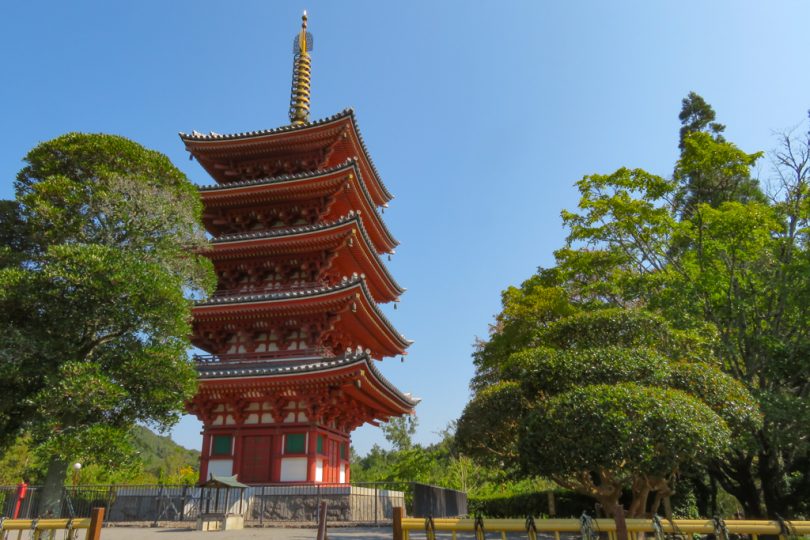
It is said to be modeled after the five-story pagoda of the national treasure Daigoji Temple in Kyoto, and it certainly looks vaguely familiar. It was a beautiful five-story pagoda with good balance.
We returned to the thick road and proceeded toward Innai Town. The road has some ups and downs.


Just before the road joins National Route387, there is the third stone bridge, Fujimi Bridge.
It is said that the bridge was named “Fujimi Bridge” (Mt. Fuji observation bridge) because Mt. Yufudake, called “Bungo Fuji” can be seen when standing on the bridge, but unfortunately we could not see it on this day.
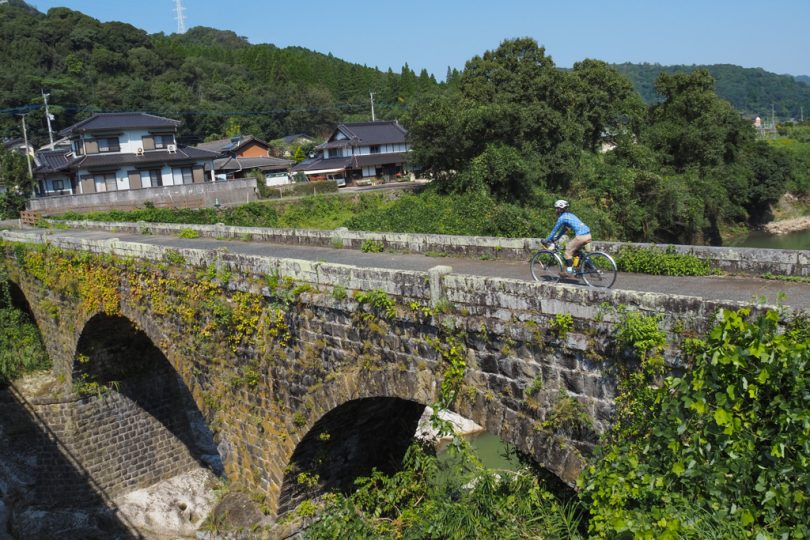
This bridge also has a park nearby, where you can look up at the stone bridge.
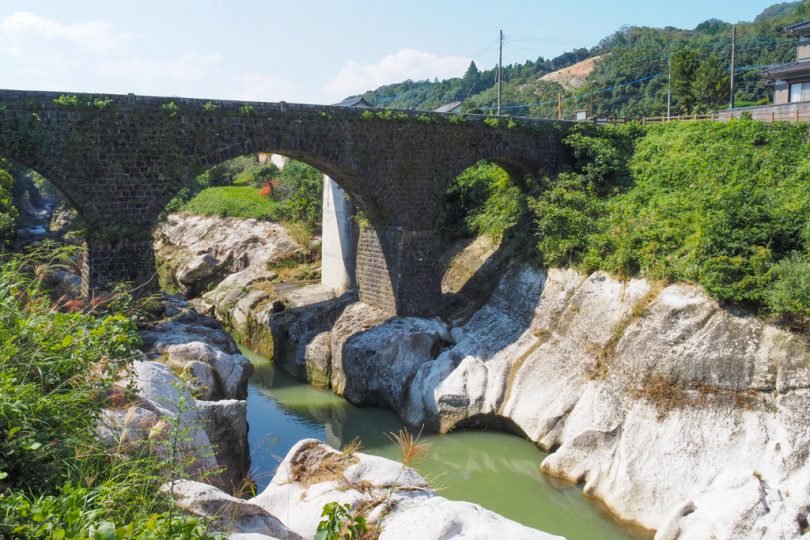
Turning left on National Route387, the fourth Takaiwa Bridge appears.
This is a sturdy stone bridge that was once crossed by military horse-drawn vehicles heading to HijudaiTraining Area.
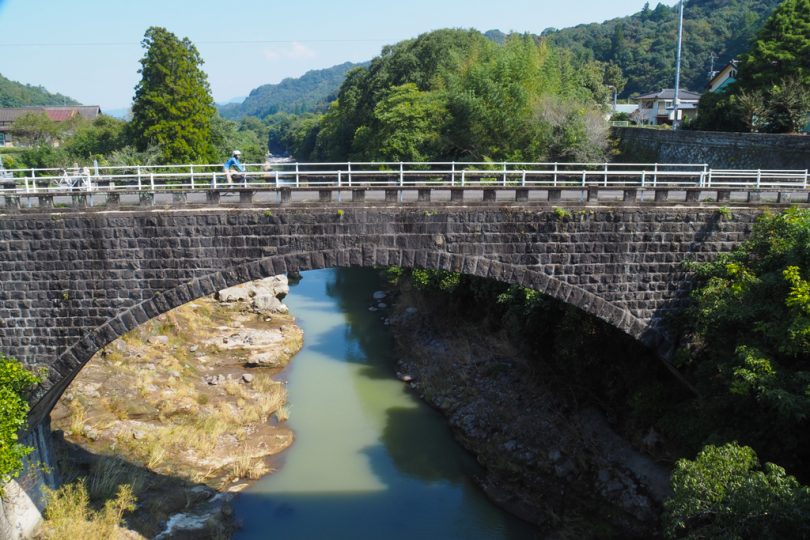
Next to the bridge is a stone monument inscribed with the words “Men who built stone bridges with romance.”
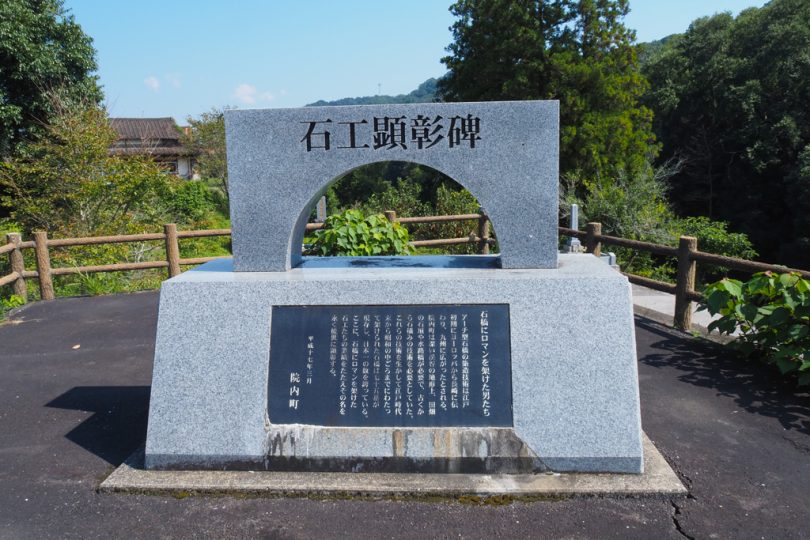
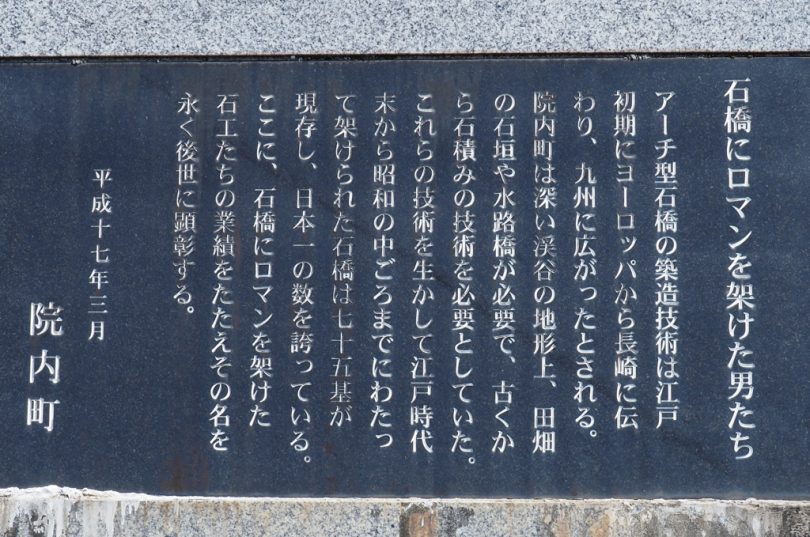
The fifth bridge beyond it, Buji Bridge, can be photographed from Buji Bridge Observation Park a short distance away.
It is a magnificent three-arched stone bridge built in the early Taisho period. When viewed from the observation park, the arches reflected in Era River are beautiful.
American USA Burger
As we were riding along, we saw an illustration on the wall of an old house with a star-spangled banner and a “USA Burger” sign. The exterior of the restaurant makes you think, “I’ve got to stop by!”
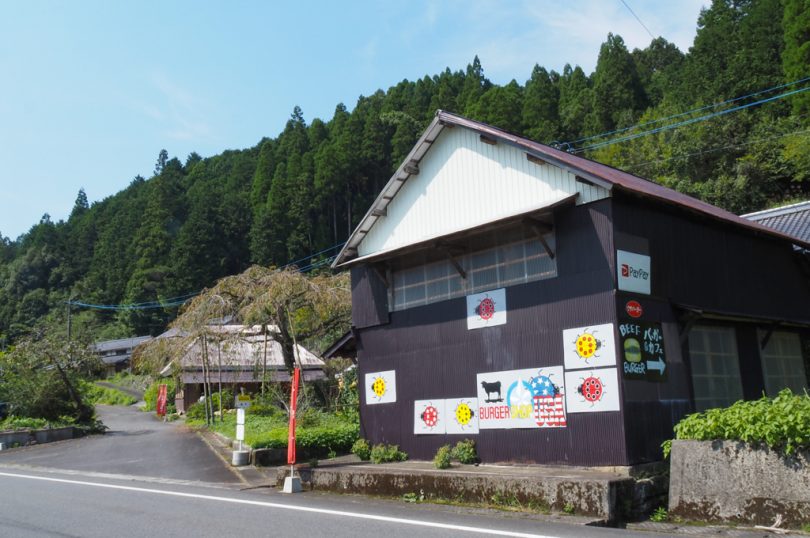
Burger Shop USA, which is housed in a renovated cow shed, has an eat-in corner.
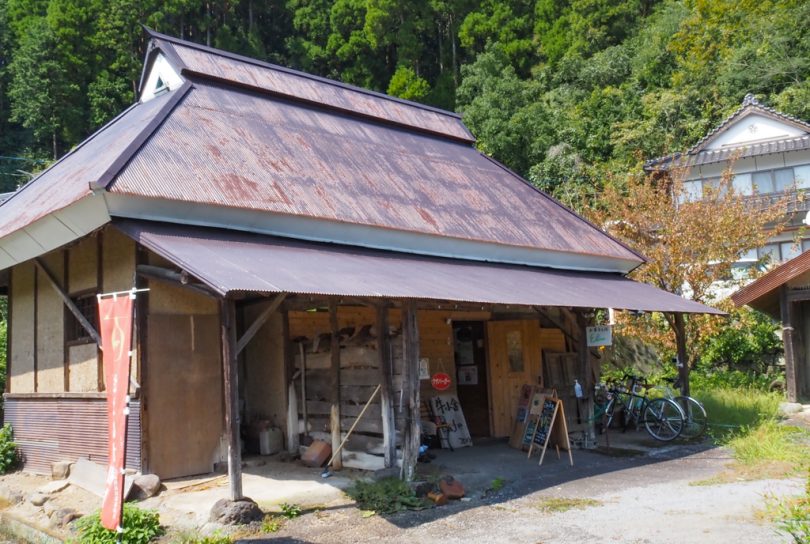

We chose “Oita Wagyu Burger” and “Bungo Beef Burger.
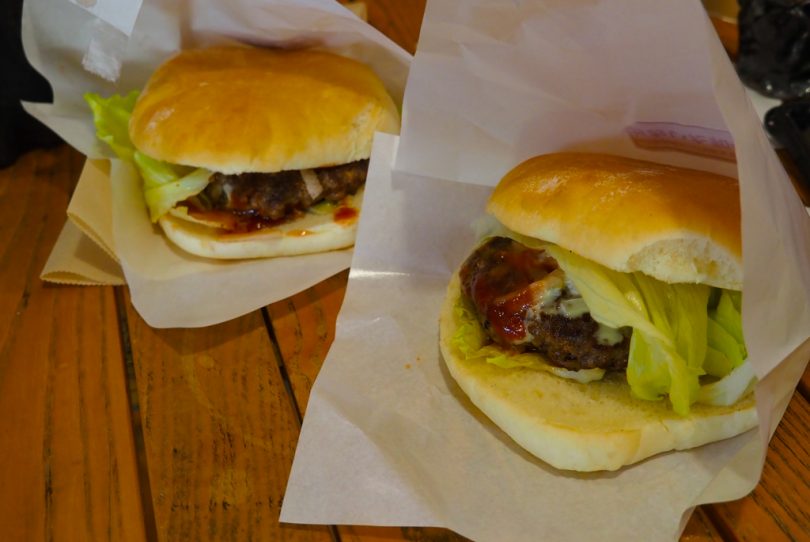
They are delicious with a strong meat flavor.
There are many other attractive items on the menu, such as “Machu Picchu Burger” and “Sengoku Burger,” which makes you want to go back again and again.
Machu Picchu of Usa
About 5km up the road from Burger Shop USA is Machu Picchu in Usa, so take it easy on the way up. The incline is not too steep and the views along the way are nice.
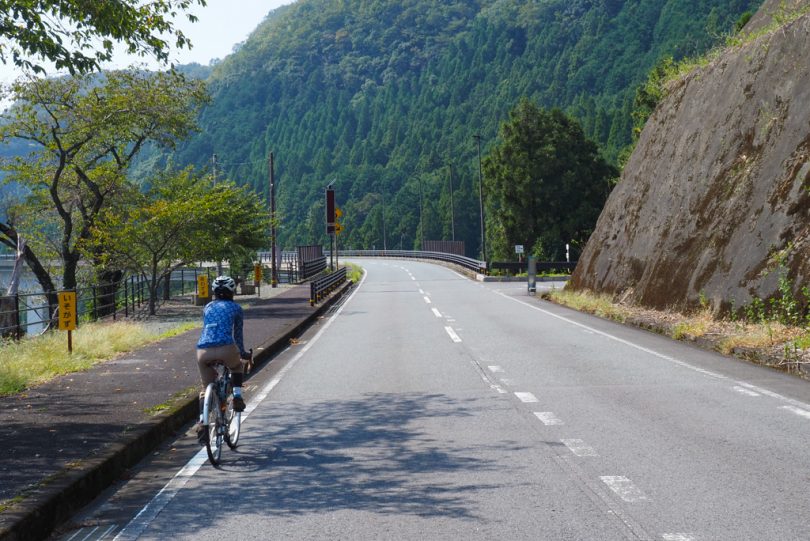
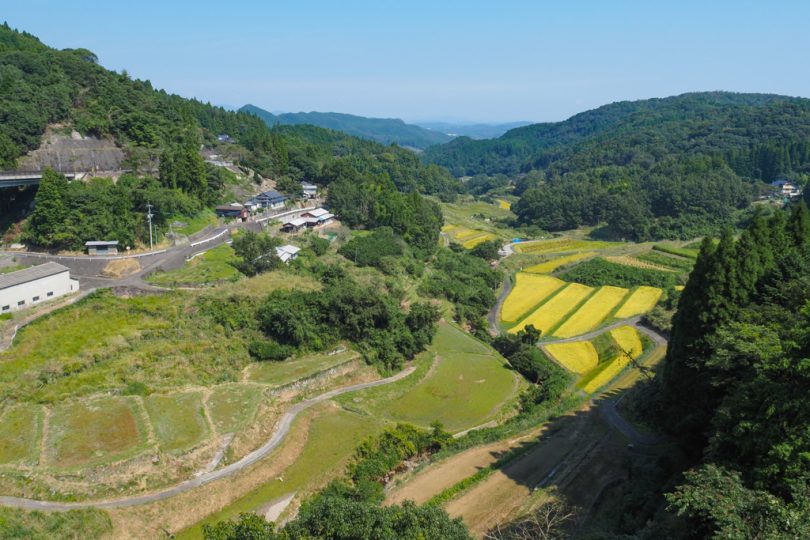
After cycling for a while and rounding a big curve, you will see a sign for the Usa Machu Picchu Observation Deck.
The observatory was well maintained with a parking lot and restrooms.

The view from the observatory was similar to that of Machu Picchu, if you are asked so.
The composition and atmosphere of the sharp mountains and terraced rice paddies is said to be similar to Machu Picchu.
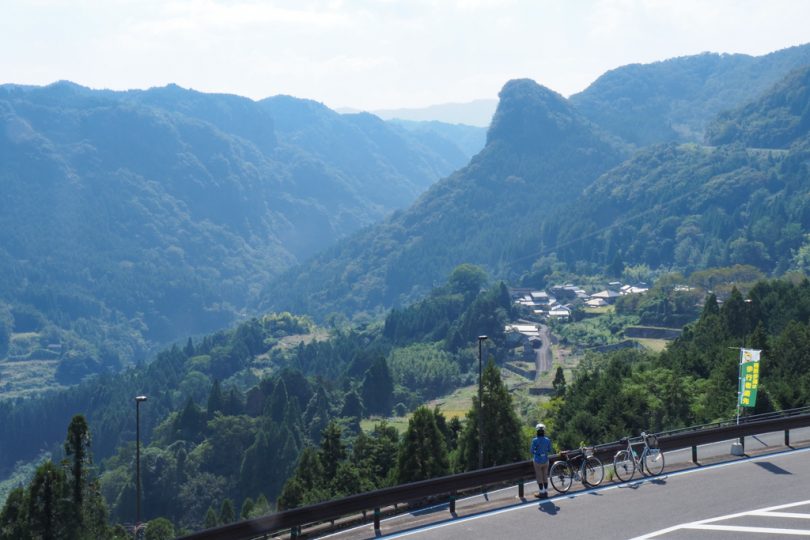
There is “King’s Chair” next to the observatory. Ponchos and a hat are available for rent, and it would be fun to take pictures as if you were the king of Peru.
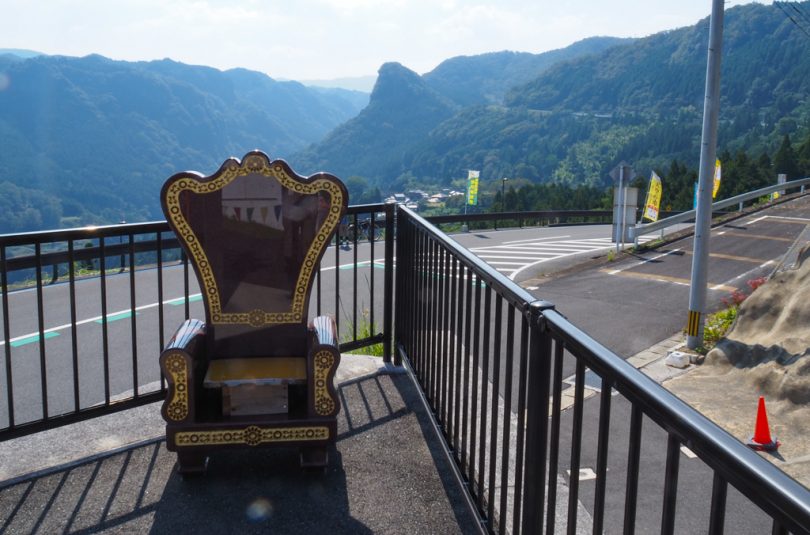
We will return to Roadside Station Innai after the climb back down the road.
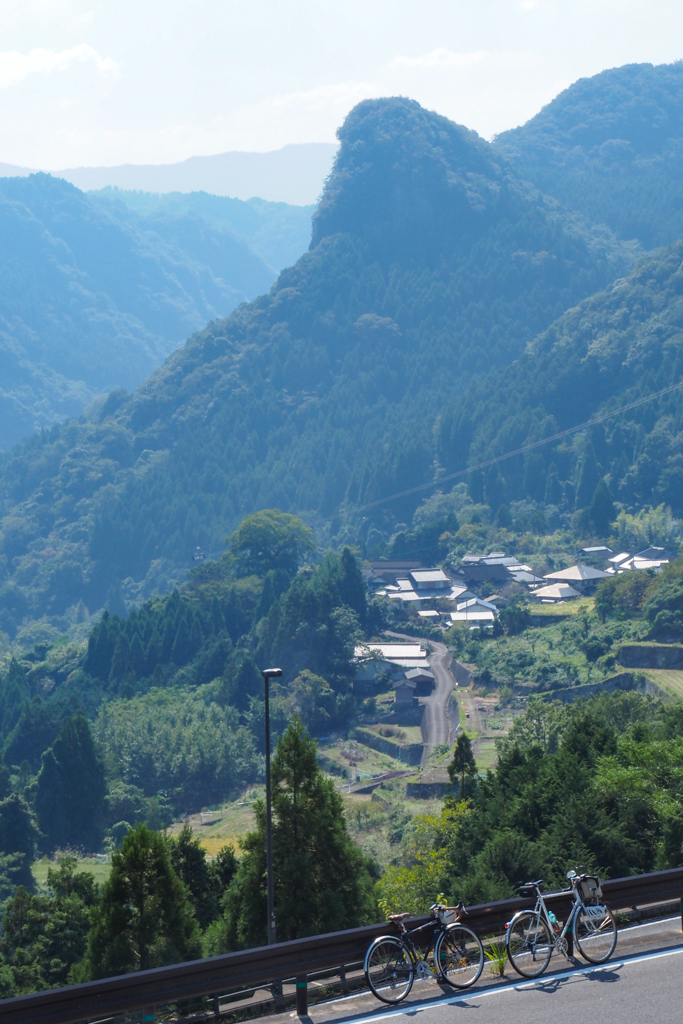
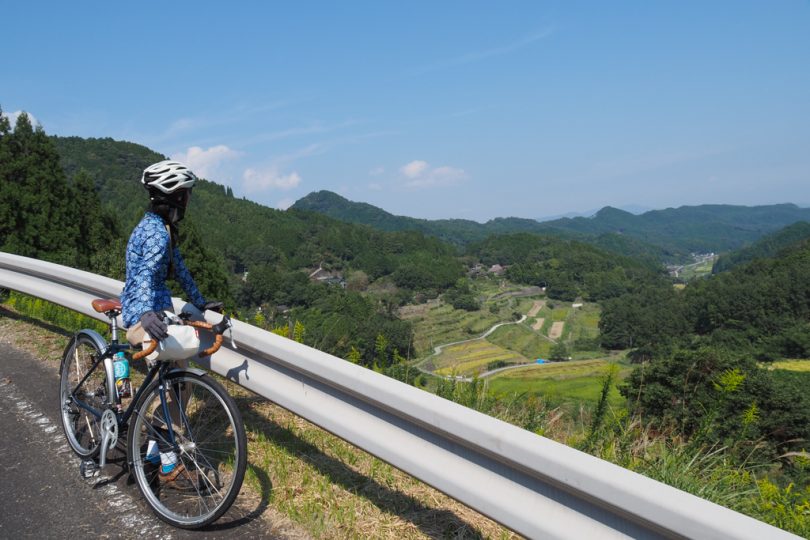
Cross the stone bridge on the way back, too
You can enjoy another view if you go through the side alleys you went through on the way up.
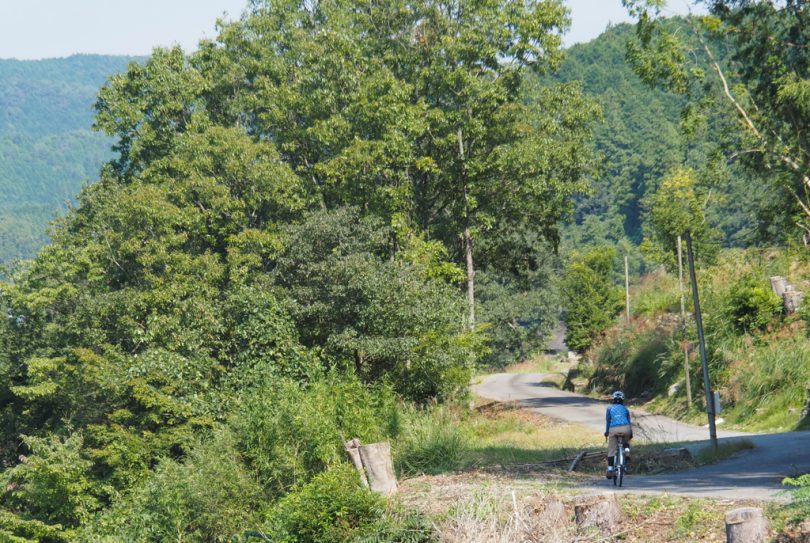
The sixth stone bridge is Noji Bridge. The bridge was built in 1915, and it looks like it is still in use by the locals.
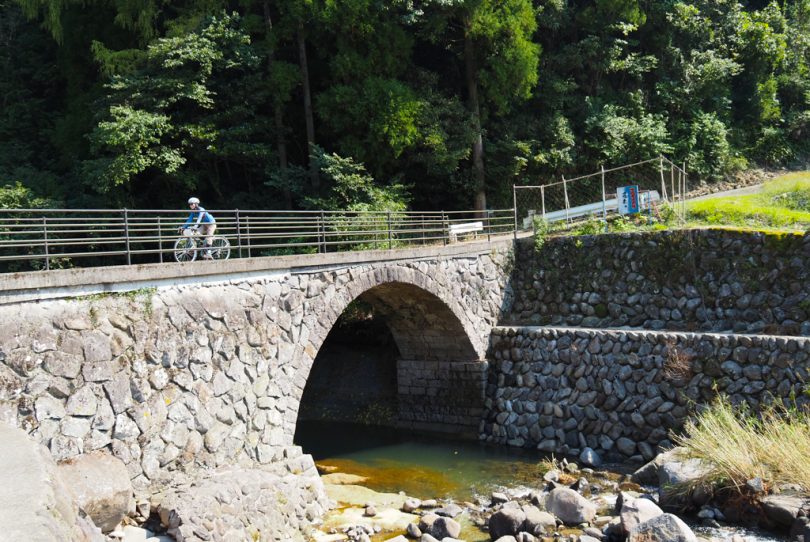
Looking at the manholes, one can see that they are also patterned after stone bridges. We can feel that Innai Town is a town that really values its stone bridges.
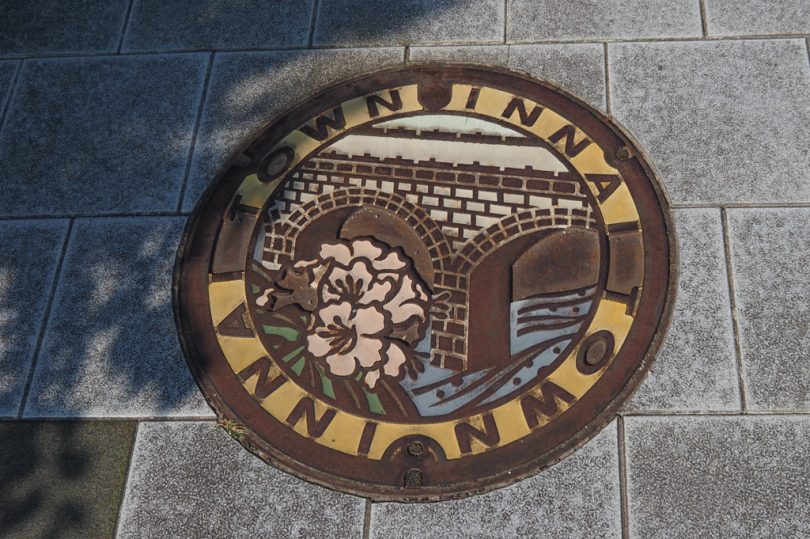
Getting local sweets at the roadside station
After returning to Roadside Station Innai, we bought some souvenirs as a thank-you for allowing us to park our car there.
Innai town is one of the largest producers of yuzu in western Japan, and the roadside station had sweets made from yuzu.
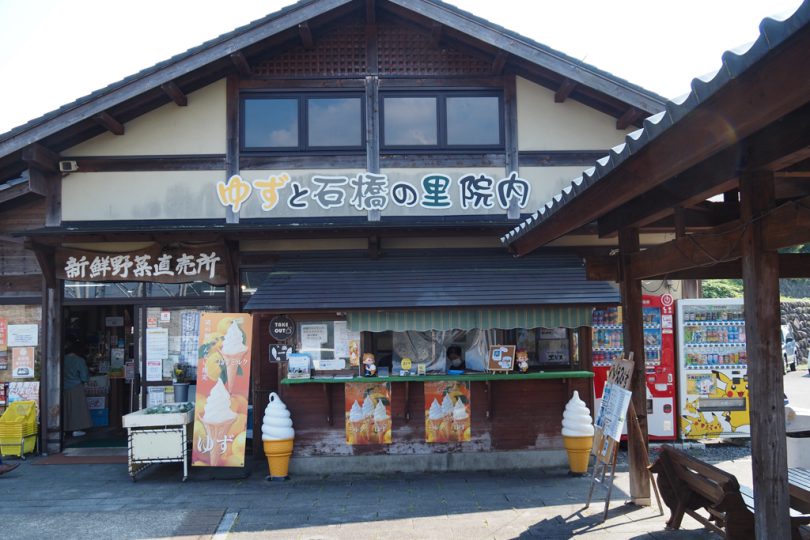
Popular items include a yuzu sundae topped with yuzu jam and yuzu rice crackers, and yuzu soft serve, which is made with plenty of yuzu.
The sweet and sour taste of yuzu is irresistible after a bike ride.
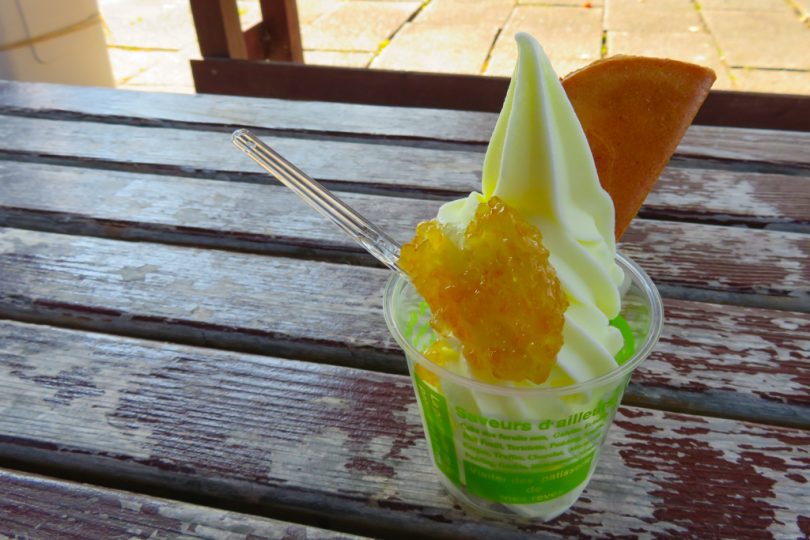
Course Introduction
Access
Train: Approx. 15min. from Usa Station of JR Nippo Main Line by Oita Kotsu Bus bound for Yokkaichi
Car: Approx. 7min. from Innai Interchange on Usa-Beppu Road
▼Roadside Station Innai
https://michinoeki-innai.net/
Summary
We visited 6 of the 75 stone bridges in Innai Town. In innai town, which has many stone bridges with a retro atmosphere, you can feel the history and nature of many of them, such as Maegaibutsu (Buddha) and rock pillars, and you can also enjoy renting a bicycle. You can also rent a bike for 300 yen per day at Roadside Station Innai.


